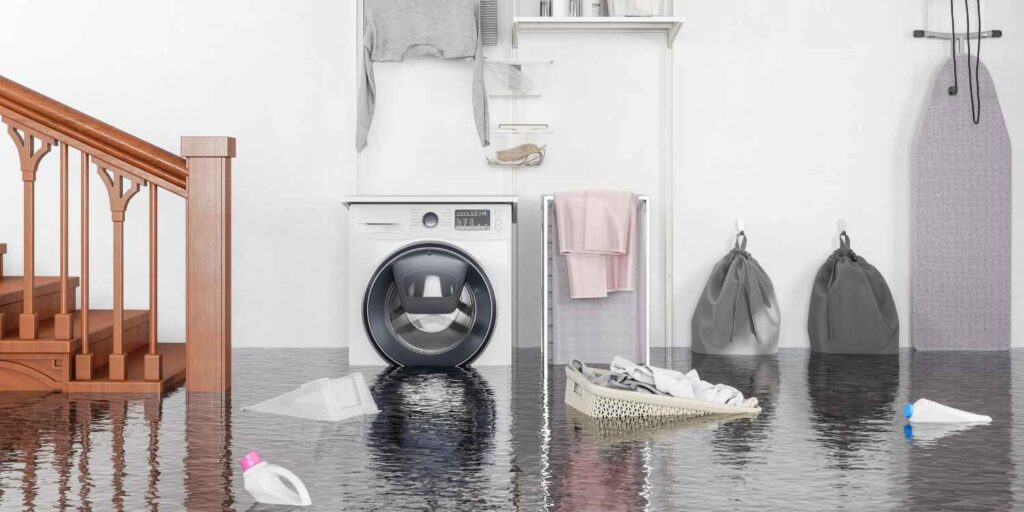Introduction:
Basement flooding can be a homeowner’s worst nightmare, causing extensive damage to property and posing health risks due to mold and mildew growth. Fortunately, there are steps that homeowners can take to prevent basement flooding and protect their homes. In this comprehensive guide, we’ll explore essential tips for preventing basement flooding and keeping your home safe and dry.
10 Tips for Preventing Basement Flooding
- Maintain Gutters and Downspouts:
One of the most critical steps in preventing basement flooding is to ensure that your gutters and downspouts are clear of debris and properly directed away from your home. Clogged gutters can cause water to overflow and pool around the foundation of your home, leading to water seepage into the basement. Regularly clean and inspect your gutters and downspouts to ensure they are functioning correctly.
- Improve Exterior Drainage:
In addition to maintaining gutters and downspouts, it’s essential to improve exterior drainage around your home’s foundation. Ensure that the ground slopes away from your home to prevent water from pooling around the foundation. Consider installing French drains or other drainage solutions to divert water away from the foundation and prevent basement flooding.
- Seal Foundation Cracks:
Cracks in the foundation walls or floors are common entry points for water during heavy rains or snowmelt. Inspect your basement for any signs of foundation cracks and seal them promptly to prevent water intrusion. Use hydraulic cement or epoxy injections to fill cracks and prevent water from seeping into your basement.
- Install a Sump Pump:
A sump pump is a vital tool for preventing basement flooding, especially in areas prone to heavy rainfall or high water tables. A sump pump removes excess water from the basement and pumps it away from the foundation, preventing water buildup and flooding. Consider installing a battery backup sump pump to ensure continuous operation during power outages.
- Waterproof Exterior Walls:
Waterproofing the exterior walls of your basement is an effective way to prevent water intrusion and basement flooding. Apply waterproof coatings or membranes to the exterior walls to create a barrier against moisture. Consider installing drainage boards or dimple mats to facilitate water drainage away from the foundation.
- Landscape with Care:
Landscaping can play a significant role in preventing basement flooding. Avoid planting trees or shrubs too close to your home’s foundation, as their roots can penetrate foundation walls and cause cracks. Instead, opt for plants with shallow root systems and consider creating a swale or dry creek bed to channel water away from the foundation.
- Maintain Plumbing Systems:
Leaking or burst pipes can cause significant water damage and contribute to basement flooding. Regularly inspect and maintain your home’s plumbing systems, including pipes, water heaters, and appliances, to identify and address any issues before they escalate. Consider installing water leak detection devices to alert you to potential leaks and prevent water damage.
- Install Window Well Covers:
Basement windows are vulnerable entry points for water during heavy rains or snowmelt. Installing window well covers can help prevent water intrusion and basement flooding by keeping debris and water out of window wells. Choose covers made of durable materials such as polycarbonate or metal and ensure they are securely fastened to the foundation.
- Test Backflow Valves:
Backflow valves are designed to prevent sewer backups and protect your home from flooding. Regularly test your backflow valves to ensure they are functioning correctly and have them inspected by a professional if necessary. Consider installing a backwater valve if your home is at risk of sewer backups.
- Monitor Moisture Levels:
Regularly monitor moisture levels in your basement to identify signs of water intrusion and prevent basement flooding. Use a moisture meter to measure humidity levels and inspect walls and floors for signs of dampness or water stains. Address any sources of excess moisture promptly to prevent mold and mildew growth and protect your home from water damage.
Conclusion:
Preventing basement flooding is essential for protecting your home and preserving its value. By following these essential tips for homeowners, you can reduce the risk of basement flooding and keep your home safe and dry. From maintaining gutters and downspouts to installing sump pumps and waterproofing exterior walls, there are many proactive steps you can take to prevent basement flooding and protect your investment.
Remember, If you’re having any issues regarding Basement Flooding (Or plumbing issues in general), do not hesitate to contact us through our website CJ Drain & Plumbing. You can send us any question you have and/or ask for a quote!
At CJ Drain & Plumbing, our team of professionals is always ready to help you.

